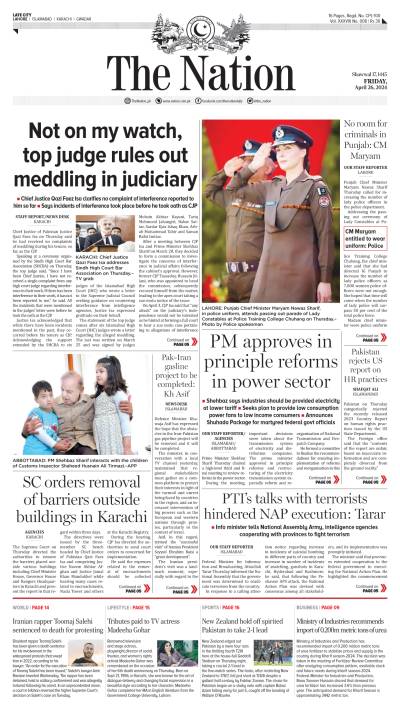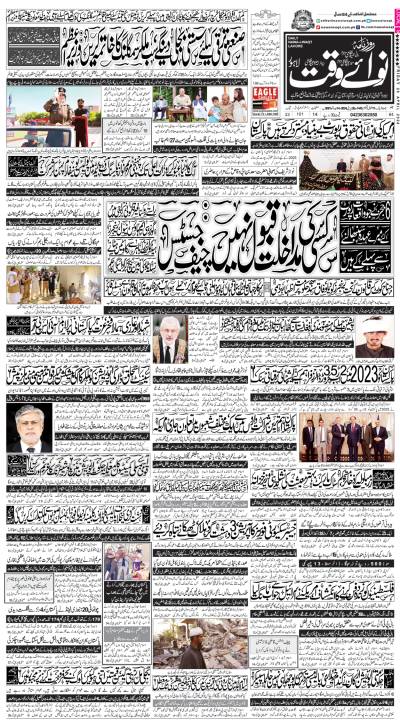The budget presented by Finance Minister Ishaq Dar was long on promises. But the real question is whether it is based on realistic assumptions and whether the necessary policy framework has been laid for the achievement of the various goals and targets contained in it. It is from this point of view that the budget falls short by a wide margin.
The outgoing financial year was marked by a low GDP growth rate of 4.1% as against the target of 4.4%. The main reason was that the national investment rate declined to 14.1% of GDP in 2013-14 as against 14.6% in 2012-13. Equally disturbing was the inability of the economy to raise the national saving rate which instead declined from 13.5% in 2012-13 to 12.9% in the outgoing financial year thereby raising the level of dependence on foreign loans and assistance. The government’s fiscal policy remained a victim of a narrow tax base and low level of revenues which were estimated to be about 9.8% of GDP in 2013-14. The federal public sector development programme was reduced to Rs.425 billion in 2013-14 as against the budgetary estimates of Rs.540 billion.
The expenditure for the defence sector amounted to Rs.921 billion in 2013-14 including Rs.629 billion allocated in the budget under the head of defence services, Rs.142 billion spent on military pensions, and Rs.150 billion provided under contingencies. Debt servicing and repayment of loans claimed Rs.1450 billion. Thus, debt servicing and defence alone claimed a total amount of Rs.2371 billion exceeding the net federal revenues by Rs.188 billion.
From the welfare point of view, it was a matter of great disappointment that the national expenditure on health remained low at 0.4% of GDP belying the government’s claims of paying increased attention to the health of the nation. Little wonder that most of the people in Pakistan do not have access to affordable and reliable health care facilities. It was shameful that this year Pakistan, with two other countries, was placed by WHO in the special category of nations where polio had not been eradicated.
The position of the education sector is not much better. Although the latest issue of the Economic Survey of Pakistan does not give the national expenditure on education in 2013-14, it is likely to be around 2% as against the UNESCO recommended norm of 4%. The obvious conclusion is that the government has forsaken its primary responsibility of providing quality education at affordable rates to the vast majority of the children of the low income classes. Regrettably our literacy percentage hovers around 60%. We are thus turning into a nation of illiterates and semi-literates. The neglect of the education of our children, who represent our future, also means that we are jeopardizing the future economic growth and prosperity of the nation.
The country continued to suffer from high rates of poverty, inflation and unemployment. The rate of unemployment was 6.2% in 2013-14 as it was in the preceding year. The inflation rate increased from 7.4% in 2012-13 to 8.7% in the outgoing financial year. The masses continued to suffer from grinding poverty and growing inequalities of income and wealth adding to the misery of the people in low income brackets.
The federal budget for 2014-15 aims to raise the GDP growth rate to 5.1%.The targeted higher GDP growth rate would require the national investment rate to be raised to about 20% of GDP. To support the higher national investment rate, a national saving rate of 19-20% of GDP would be required. However, one does not see any specific measures in the budget to raise the domestic saving rate to the required level. In the absence of such measures, any attempt to raise the national investment rate to 20% or more would increase our dependence on foreign loans and aggravate inflationary pressures within the country.
The fiscal position of the government is likely to remain precarious because of inadequate attention to widening of the tax base and the heavy financial burden on account of defence, debt servicing, and repayment of foreign loans. As noted earlier, the total of the expenditure under these heads alone exceeds by far the net federal revenues. This is a worrisome situation. While the financing of development expenditure through loans can be justified because development activities add to the productive capacity and income levels of the economy facilitating debt servicing and the repayment of loans, the same is not true about current expenditure. The financing of current expenditure through loans increases the financial burden on the government budget in the coming years without corresponding increase in the country’s productive capacity and income levels.
In 2014-15, the situation is unlikely to change for the better. The total defence expenditure including Rs.700 billion under the head of defence affairs and services, Rs.163 billion under military pensions, and Rs.165 billion under the contingent liabilities would amount to Rs.1028 billion which would be about 46% of the net federal revenues estimated to be Rs.2225 billion in 2014-15. If one adds the expenditure envisaged for debt servicing and repayment of foreign loans amounting to RS.1458 billion, the total would exceed the net revenues of the federal government by Rs.261 billion. Further, since the total current expenditure in 2014-15 would be Rs.3463 billion, the burden of financing current expenditure through loans would amount to Rs.1238 billion which does not show any significant improvement over the situation in the outgoing financial year.
So the fiscal position of the federal government would remain as precarious in 2014-15 as it was in the preceding year. Further, the allocation of funds for developmental activities would suffer because of the heavy demands of debt servicing and defence. In particular, the allocation of funds for education and health will remain extremely restricted. One should not expect any breakthrough in the eradication of poverty or in lowering levels of unemployment or inflation.
There are hardly any significant proposals in the budget for 2014-15 for widening the tax base, which is a necessity to raise the tax-to-GDP ratio and increase the government revenues for meeting its essential current and developmental expenditures. It is a pity that compared to the average tax-to-GDP ratio of 15% in developing countries, this ratio is as low as 9.8% in Pakistan. In addition, most of the tax revenues of the federal government come through indirect taxes, which are regressive in nature, burdening the low income classes more than the rich, rather than direct taxes. There is no evidence in the budgetary proposals for 2014-15 for a material change in the complexion of the taxation system in Pakistan.
In short, the budget for 2014-15 promises more than what it is likely to deliver. This is primarily because the necessary policy framework for achieving the various targets contained in it has not been proposed in the budget. The budget is, therefore, likely to prove disappointing rather than the carrier of good tidings.
The writer is a retired ambassador and the president of the Lahore Council for World Affairs.
javid.husain@gmail.com





